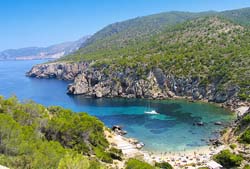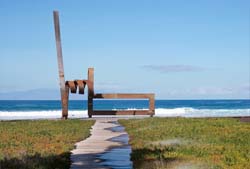Balearic & Canary Islands Geography

In addition to mainland Spain, the country is also comprised of 17 smaller islands arranged in two significant groups; off the eastern coast of the peninsular lies the Balearic Islands archipelago and off the North West coast of Africa lies that of the Canary Islands. Amongst this total of 17 islands, the 11 largest have become increasingly popular among tourists and migrants in search of all the attractions that mainland Spain has to offer but with much better access to a beach! Each Island in turn is also home to its own, unique cultural charms and attractions mainly due to their location in either the Mediterranean Sea or Atlantic Ocean. From the volcanoes of Lanzarote and Tenerife to the party hotspot of Ibiza, Spain’s islands have become one of the most sought-after destinations to visit in Europe. Whether it’s an endless, white, sandy beach to while away the sunlight hours, an unbeatable and breathtaking landscape or a world-renowned nightlife, Spain’s magnificent islands have it all...
Balearic Islands
Located off the eastern coast of peninsular Spain, the Balearic Islands are composed of five main islands which include Ibiza, Majorca, Formentera, Cabrera and Minorca. The archipelago itself forms an autonomous community of Spain with Palma, located in Majorca, as its capital. In addition, both Catalan and Castilian are recognised as official languages of each island allowing a culturally diverse destination for both tourists and Spanish citizens and, due to the large amount of tourists that flock to the islands each year, English and German are also quite widely spoken.
Due to its location in the Mediterranean, the Balearic Islands enjoy a temperate, sunny climate throughout most of the year with temperatures during the summer months reaching around 30 degrees. Along with their perfect beaches and unique culture, this makes the Balearic Islands highly popular among tourists from all over the world who want to escape the crowds and stress of city life and is the second most popular region in Spain, after Catalonia, for foreign tourists each year. Although popular with tourists and the party scene, each island has still managed to retain its traditional beauty and landscape away from the main tourist sites.
Canary Islands

Not only do the Canary Islands have significant differences in comparison to the Balearic Islands or mainland Spain, but they are also located just of the eastern coast of Africa, away from the Iberian Peninsular. The islands which make up the Canary archipelago include Gran Canaria, Tenerife, Lanzarote, La Palma, La Gomera, El Hierro and Fuertaventura. Volcanic and breathtakingly beautiful, the Canaries also form an autonomous community of Spain with its capital cities being Santa Cruz (Tenerife) and Las Palmas (Gran Canaria).
Along with a perfect subtropical climate, tourists are also attracted to the Canaries by the landscape, especially in terms of the volcanic activity found on a number of the islands. Tenerife is home to Teide National Park, home to the third largest volcano in the world and largest mountain in Spain. Visitors to Lanzarote may also want to visit the Timanfaya National Park, where coach tours are available around the park and you can eat in a restaurant where food is prepared using the natural heat emitted from a volcano.









